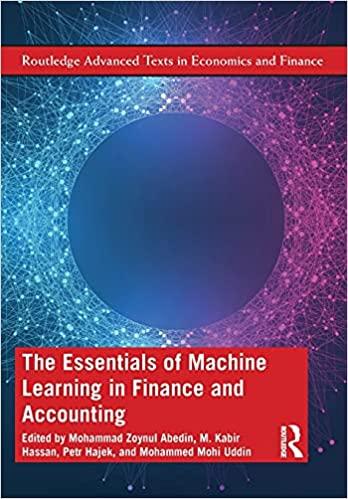eBook Problem 11-08 Two stocks each currently pay a dividend of $2.20 per share. It is anticipated that both firms dividends will grow annually at the rate of 2 percent. Film A has a beta coefficient of 0.97 while the beta coefficient of firm Bis 1.28. a. I U.S. Treasury bills currently vield 2.5 percent and you expect the market to increase at an annual rate of 8.9 percent, what are the valuations of these two stocks using the dividend-growth model? Do not round Intermediate calculations. Round your answers to two decimal places Stock A: 5 Stock B: 5 b. Why are your valuations different? The beta coefficient of Select is higher, which indicates the stock's return is Select volatile. c. If stock A's price were 538 and stock B's price were $35, what would you do? Stock A ls -Select- and Select- be purchased. Stock B is -Select- and -Select- be purchased. eBook Problem 11-08 Two stocks each currently pay a dividend of $2.20 per share. It is anticipated that both firms dividends will grow an coefficient of 0.97 while the beta coefficient of firm B is 1.28. a. If U.S. Treasury bills currently yield 2.5 percent and you expect the market to increase at an annual ratec stocks using the dividend-growth model? Do not round intermediate calculations. Round your answers to Stock A: $ Stock B: $ b. Why are your valuations different? The beta coefficient of Select- is higher, which indicates the stock's return is -Select- volatile. -Select- C. If stock A's price we stock A 1 stock B's price were $35, what would you do? stock B Stock A is Select vand -Select- be purchased Stock B is -Select- vand -Select- be purchased. LO eBook roblem 11-08 wo stocks each currently pay a dividend of $2.20 per share. It is anticipated that both firms dividends will grow annually oefficient of 0.97 while the beta coefficient of firm Bis 1.28. a. If U.S. Treasury bills currently yield 2.5 percent and you expect the market to increase at an annual rate of 8.9 stocks using the dividend-growth model? Do not round intermediate calculations. Round your answers to two de Stock A: $ Stock B: $ b. Why are your valuations different? The beta coefficient of Select is higher, which indicates the stock's return is Select y volatile. -Select c. If stock A's price were $38 and stock B's price were $35, what would you do? less Stock A is -Select- vand -Select be purchased. more Stock Bis -Select- and -Select- be purchased. CO eBook Problem 11-08 Two stocks each currently pay a dividend of $2.20 per share. It is anticipated that both firms dividends will grow coefficient of 0.97 while the beta coefficient of firm Bis 1.28. a. If U.S. Treasury bills currently yield 2.5 percent and you expect the market to increase at an annual r. stocks using the dividend-growth model? Do not round intermediate calculations. Round your answer Stock A: $ Stock B: $ b. Why are your valuations different? The beta coefficient of -Select is higher, which indicates the stock's return is Select volatile. c. If stock A's price were $38 and stock B's price were $35, what would you do? land Select be purchased. Stock A is-Select- -Select- Stock B is undervalued overvalued and Select be purchased. 8. Problem 11-08 eBook Problem 11-08 Two stocks each currently pay a dividend of $2.20 per share. It is anticipated that both firms dividends will coefficient of 0.97 while the beta coefficient of firm B is 1.28. a. If U.S. Treasury bills currently yield 2.5 percent and you expect the market to increase at an ann stocks using the dividend-growth model? Do not round intermediate calculations. Round your an Stock A: $ Stock B: $ b. Why are your valuations different? The beta coefficient of -Select- v is higher, which indicates the stock's return is -Select- volatile. C. If stock A's price were $38 and stock B's price were $35, what would you do? Stock A is -Select- vand: -Select- be purchased. Stock B is -Select- -Select- and should should not be purchased. eBook Problem 11-08 Two stocks each currently pay a dividend of $2.20 per share. It is anticipated that both firms dividends will g coefficient of 0.97 while the beta coefficient of firm B is 1.28. a. If U.S. Treasury bills currently yield 2.5 percent and you expect the market to increase at an annua stocks using the dividend-growth model? Do not round intermediate calculations. Round your answ Stock A: $ Stock B: $ b. Why are your valuations different? The beta coefficient of -Select- v is higher, which indicates the stock's return is -Select- volatile. c. If stock A's price were $38 and stock B's price were $35, what would you do? Stock A is -Select- vand -Select- be purchased. vand -Select- be purchased. Stock Bis -Select- -Select- undervalued overvalued eBook olem 11-08 stocks each currently pay a dividend of $2.20 per share. It is anticipated that both firms' dividends will gro icient of 0.97 while the beta coefficient of firm B is 1.28. a. If U.S. Treasury bills currently yield 2.5 percent and you expect the market to increase at an annual stocks using the dividend-growth model? Do not round intermediate calculations. Round your answer Stock A: $ Stock B: $ b. Why are your valuations different? The beta coefficient of -Select- v is higher, which indicates the stock's return is Select-v volatile. c. If stock A's price were $38 and stock B's price were $35, what would you do? Stock Ais -Select- vand -Select- be purchased. y be purchased. Stock B is -Select- vand: -Select- -Select- should should not













